Keystone Plants: Greatest Supporters of our Moths and Butterflies
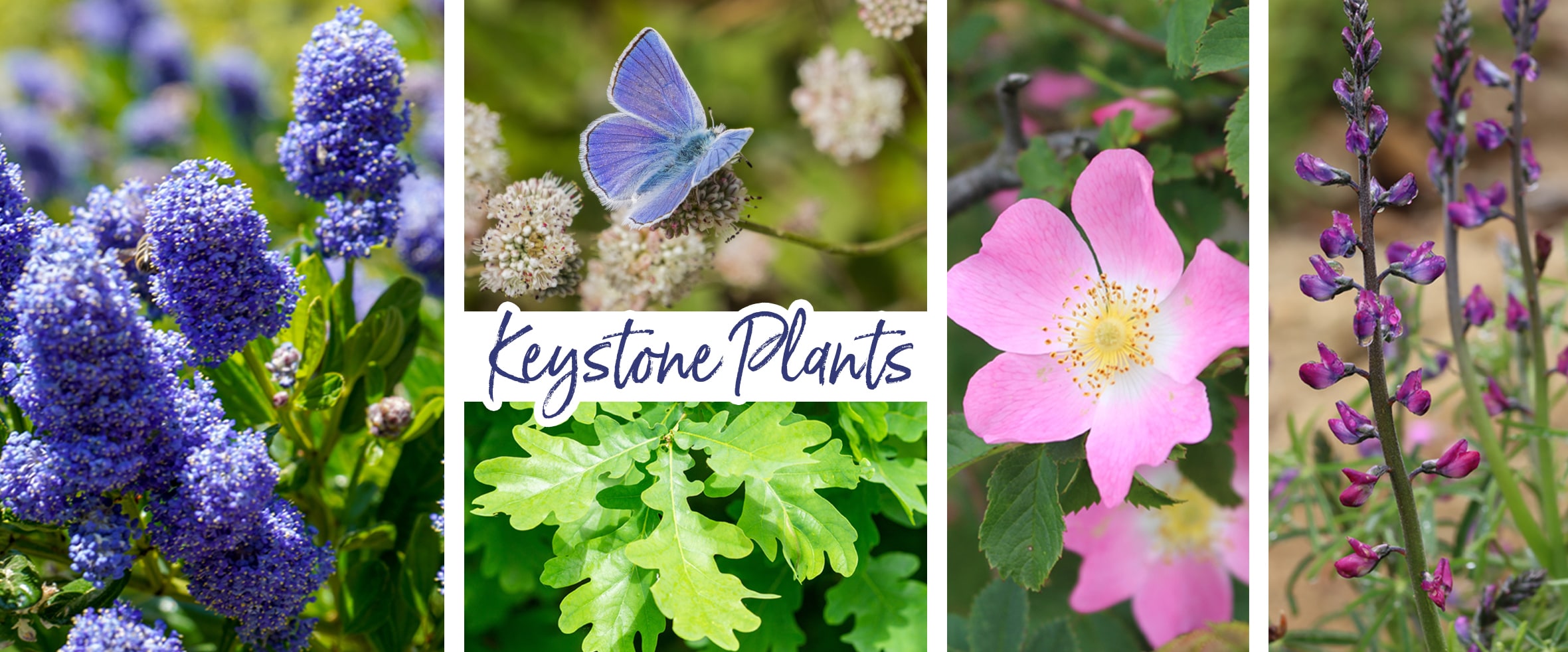 Keystone plants are vital for ecological landscapes, especially in the Bay Area gardens of California. They play a crucial role in supporting diverse species by hosting a significant number of butterflies and moths.
Keystone plants are vital for ecological landscapes, especially in the Bay Area gardens of California. They play a crucial role in supporting diverse species by hosting a significant number of butterflies and moths.
Here's a detailed look at some of these plants along with the number of species they support:
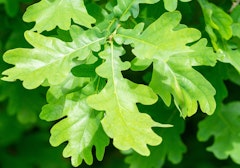
Oaks
- Species Supported – 270
Oaks are foundational in supporting wildlife, offering habitat and food for a wide range of butterfly and moth species.
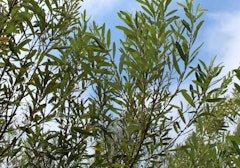
Arroyo Willow
- Species Supported – 224
Salix-lasiolepis, Arroyo native willow, is crucial for many butterfly and moth species and also provides nesting sites for birds. It thrives along streams and moist sites, playing a crucial role in erosion control and supporting various wildlife.
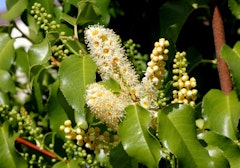
Hollyleaf Cherry
- Species Supported – 144
Prunus illicifolia, Hollyleaf Cherry, recognized as either a shrub or a small tree, is celebrated for its dense foliage and the presence of edible cherries that resemble holly leaves. These features make it an indispensable food source for local wildlife, supporting a variety of insects and birds with its nourishing berries.
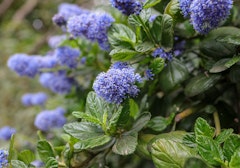
California Lilacs
- Species Supported – 117
Ceanothus, California Lilacs, comprising both shrubs and small trees, are celebrated for their abundant blue or purple blooms. These vibrant flowers not only draw a wide range of pollinators but also support butterfly and moth populations, playing a crucial role in sustaining the ecosystem. Their dense blossoms provide essential cover for birds, enhancing local biodiversity.
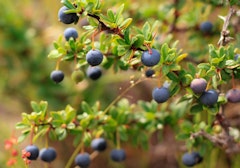
Native Blueberries
- Species Supported – 106
Vaccinium, Blueberries, native to California, typically small to medium-sized shrubs, are crucial for their fruit production, which provides sustenance not only to local wildlife but also supports butterfly and moth larvae. These shrubs yield edible berries that play a significant role in the dietary needs of various creatures.
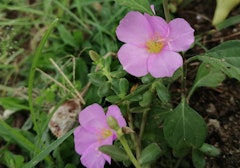
California Wild Rose
- Species Supported – 96
Rosa californica, the California Wild Rose, a shrub typically forming dense thickets, is renowned for its decorative pink blossoms and nutritious rose hips. These features make it a vital resource, providing both habitat and sustenance to a diverse array of insects and birds.
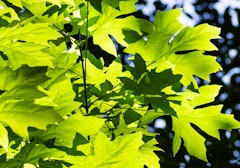
Bigleaf Maple
- Species Supported – 87
Acer macrophylla, the Bigleaf Maple, a large deciduous tree, is celebrated for its expansive leaves and substantial canopy, which provide essential habitat and shade. This robust foliage supports a variety of butterfly and moth species along with numerous other insects and birds, making it a key component of its ecosystem.
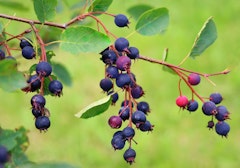
Juneberry
- Species Supported – 77
Amelanchier alnifolia, Juneberry, also known as serviceberry, functions as either a shrub or small tree. Renowned for its delightful spring flowers and edible berries, it provides substantial nourishment through both features. These elements make it an indispensable source of food for various butterfly and moth species as well as a boon for birds and other pollinators.
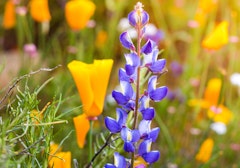
Lupine
- Species Supported – 75
Lupin, Lupines, predominantly perennials but also including some annuals and shrubby forms, are valued for their colorful flower spikes. These legumes significantly enhance soil fertility by fixing nitrogen, creating a more nutrient-rich environment. Additionally, they serve as an important food source for many butterfly larvae, playing a crucial role in supporting local biodiversity.
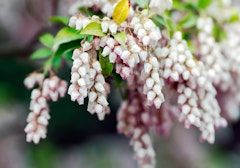
Manzanitas
- Species Supported – 68
Arctostaphylos, Manzanitas are predominantly evergreen shrubs, though some may grow into small tree forms. They are notable for their distinctive red bark and attractive urn-shaped flowers. These characteristics not only make them essential for native bees and birds but also vital for the survival of many local butterfly and moth species, supporting a diverse range of wildlife within their habitats.
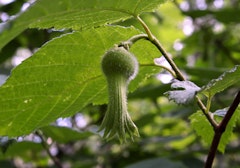
Beaked Hazelnut
- Species Supported – 63
Corylus cornuta, Beaked Hazelnut is either a shrub or small tree, known for its production of edible nuts and catkins. These elements are essential food sources for wildlife, with the catkins serving as an important early spring pollen source. This plant not only offers sustenance but also creates valuable habitats for various animals.
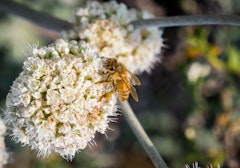
California Buckwheat
- Species Supported – 56
Eriogonum fasciculatum, California Buckwheat is a drought-resistant, low-growing shrub that is crucial for sustaining butterflies and moths. It produces clusters of small flowers, typically white or pink, which bloom extensively over a long period. This plant is not only vital for many insects but also enhances local biodiversity with its enduring floral display.
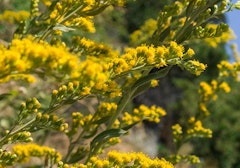
California Goldenrod
- Species Supported – 55
Solidago californica, California Goldenrod is a perennial herb that captivates a broad spectrum of pollinators with its vivid yellow blooms. Particularly advantageous for native butterfly and moth species, this wildflower plays a critical role in supporting a diverse ecological community through its attractive and long-lasting flowers.
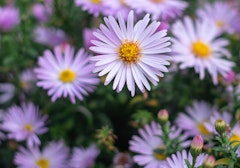
Asters
- Species Supported – 53
Symphyotrichum chilense, Asters, as perennial herbs, are invaluable for their late-season blooms. These flowers offer essential pollen and nectar sources that are vital for sustaining butterfly and moth populations towards the end of the growing season, ensuring a continuous food supply when other sources are scarce.
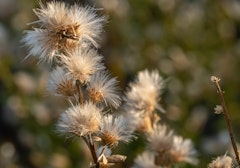
Coyote Brush
- Species Supported – 37
Baccharis pilularis, Coyote Brush, a shrub commonly found in coastal landscapes, serves as a pioneer species in disturbed areas. It excels in establishing quickly, providing essential cover and sustenance for a wide range of insect species as well as birds, making it a crucial component of habitat restoration efforts.
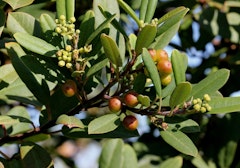
Buckthorn/Coffeeberry
- Species Supported – 33
Rhamnus californica, California Coffeeberry, a native and adaptable shrub, is crucial for supporting local butterfly and moth populations despite being sometimes considered invasive in certain areas. Its berries provide a significant food source for birds, enhancing its ecological value in a variety of habitats.
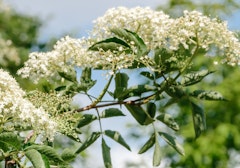
Elderberry
- Species Supported – 31
Sambucus, Elderberry, typically found as shrubs or small trees, grows rapidly and is distinguished by its clusters of small, white flowers and dark berries. Both the flowers and fruits are immensely valuable, providing essential nutrients and attracting a diverse array of insects and birds.
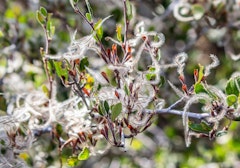
Mountain Mahogany
- Species Supported – 31
Cercocarpus betuloides, Mountain Mahogany, either a shrub or small tree, is renowned for its hard wood and ability to thrive in dry conditions. Not only does it feature attractive flowers, but it also supports a diverse array of butterfly and moth species, making it a valuable component of its native ecosystems.
Each of these plants not only contributes to the beauty of landscapes but also plays a crucial role in maintaining local biodiversity.

